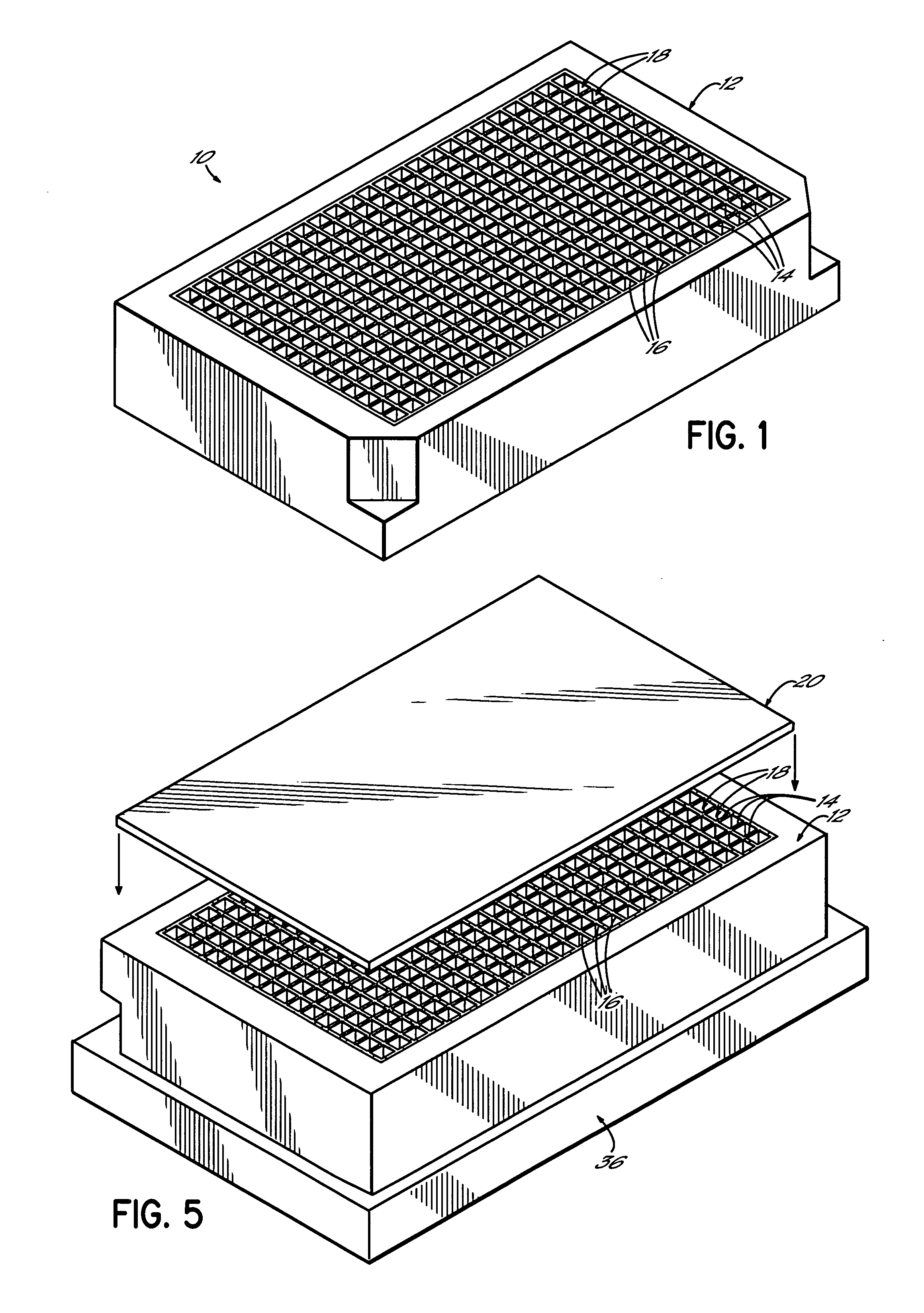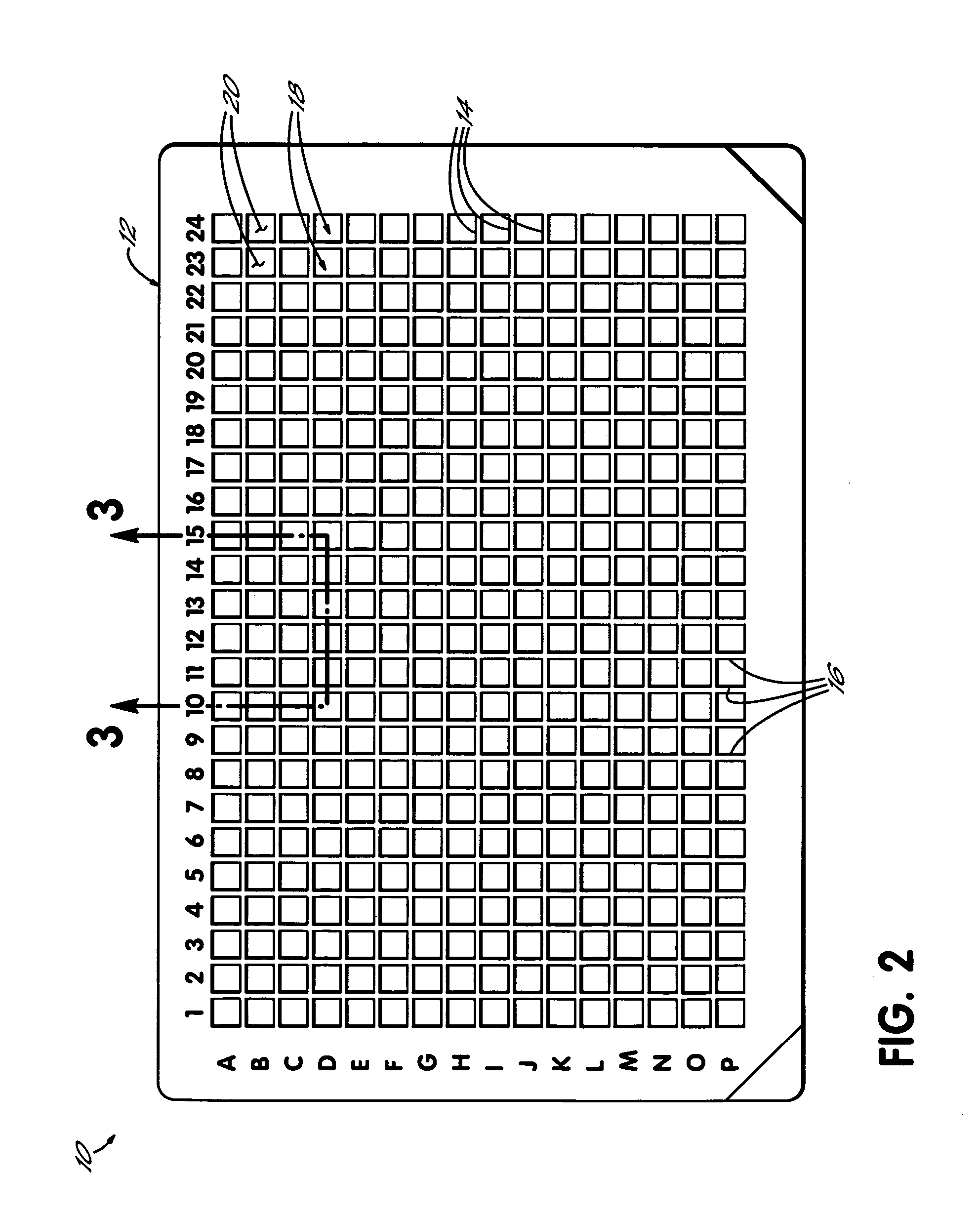Methods of making a multi-well test plate having an adhesively secured transparent bottom panel
a multi-well, transparent technology, applied in laboratory glassware, laboratory apparatus, chemistry apparatus and processes, etc., can solve the problems of adhesive migration into the test well, difficulty in achieving a seal in the surrounding relationship to each individual, and insufficient adhesion around the bottom of each well,
- Summary
- Abstract
- Description
- Claims
- Application Information
AI Technical Summary
Benefits of technology
Problems solved by technology
Method used
Image
Examples
Embodiment Construction
[0022] Referring first to FIGS. 1-3, a multi-well test plate 10 constructed in accordance with one preferred embodiment of the invention generally comprises an upper frame portion 12 having a plurality of walls 14, 16. Upper frame portion 12 is preferably formed from a polymer, such as polystyrene, and is preferably opaque. Other polymer resins suitable for forming upper frame portion 12 include, but are not limited to, polyolefins (e.g., polypropylene, high density polyethylene, and polymethylpentene), cyclic olefin polymers and copolymers, acrylics, polyesters, polycarbonate, polystyrene, high impact polystyrene, and polysulfone. Depending on the intended use of test plate 10, upper frame portion 12 can be transparent, translucent, or opaque. In specific embodiments, the upper frame portion 12 may be white, which provides advantageous light reflective properties, or black, which has advantageous light absorptive properties. Walls 14, 16 define independent wells 18 for receiving li...
PUM
| Property | Measurement | Unit |
|---|---|---|
| viscosity | aaaaa | aaaaa |
| transparent | aaaaa | aaaaa |
| flexible | aaaaa | aaaaa |
Abstract
Description
Claims
Application Information
 Login to View More
Login to View More - R&D
- Intellectual Property
- Life Sciences
- Materials
- Tech Scout
- Unparalleled Data Quality
- Higher Quality Content
- 60% Fewer Hallucinations
Browse by: Latest US Patents, China's latest patents, Technical Efficacy Thesaurus, Application Domain, Technology Topic, Popular Technical Reports.
© 2025 PatSnap. All rights reserved.Legal|Privacy policy|Modern Slavery Act Transparency Statement|Sitemap|About US| Contact US: help@patsnap.com



